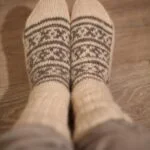Himachal Pradesh is not only known for its majestic mountains and scenic valleys, but also for its rich cultural heritage, of which handloom weaving is a vital thread. For more than 5,000 years, weaving has been intricately woven into the daily lives, traditions, and rituals of the people of Himachal. From the ancient looms of Kinnaur to the vibrant motifs of Kullu, this craft is both a livelihood and a legacy.
📜 A Journey Through Time: The Origin of Himachali Weaving
The roots of Himachali weaving trace back to the village of Shubnam in Kinnaur. Historical accounts suggest that the intricate wool weaving traditions came to Kinnaur from Tashkent in Uzbekistan, travelling through the Silk Route via China and Tibet. What began as a utilitarian skill slowly evolved into an artistic expression, rich in symbolism and community identity.
In the 1830s, a key shift occurred when weavers from Rupa village in Kinnaur, fleeing persecution, migrated to the Kullu Valley. They carried with them not just looms, but centuries of craftsmanship. With support from local rulers, these weavers passed on their knowledge to the Kullvi people, thus giving birth to what we now recognize as the distinct Kullu weaving tradition.
🎨 The Art of Kullu Motifs: A Symphony of Geometry and Color
One of the most recognizable elements in Himachali textiles is the Kullu motif. Typically set against a plain or checkered background, these geometric patterns—often zig-zags, stripes, or twill weaves—are a signature of authenticity. What makes them truly captivating is the color harmony.
Kullvi weavers traditionally use seven vivid colors in equal proportions. These include:
🔴 Red
🔵 Blue
🟢 Green
💛 Yellow
💗 Pink
⚪ White
⚫ Black (occasionally)
These patterns are not random—they are first carefully drawn on graph paper, then woven thread-by-thread onto the fabric using vibrant wool yarns. This process not only ensures precision but also preserves the cultural integrity of the design.
🧘♀️ The Mystical Symbolism of Kinnauri Motifs
The Kinnauri shawls and garments are famous for their mystico-spiritual motifs. Primarily crafted using five colors—red, yellow, blue, white, and green—these colors represent the five elements of nature in Buddhist philosophy. Many of the motifs mirror mandalas, radiating spiritual energy, balance, and connection to the cosmos.
These shawls aren’t just clothing—they are often used in religious rituals, weddings, and festivals, making them a piece of living heritage and sacred artistry.
👩🎨 A Handcrafted Future: Sustaining Himachali Weaving
Today, Himachali weaving is experiencing a revival. Platforms like HimachalBox.com are connecting weavers with global audiences who appreciate the value of handmade, ethical, and sustainable products. Every handloom shawl, stole, muffler, or cushion cover not only carries warmth—it carries history, identity, and soul.
By choosing authentic Himachali handloom, you’re not just buying a product—you’re supporting local livelihoods, preserving ancient traditions, and celebrating Himalayan culture.
📌 Final Thoughts
The story of Himachali weaving is one of migration, resilience, and creativity. From the sacred Buddhist motifs of Kinnaur to the bright borders of Kullu shawls, this artform represents the fabric of Himachal’s soul.
Let’s honour the hands that weave these stories. Let’s support Himachali artisans. Let’s keep this tradition alive.
Explore more handcrafted wonders at HimachalBox.com
Crafted in the mountains. Made for the world.


















You must be logged in to post a comment.